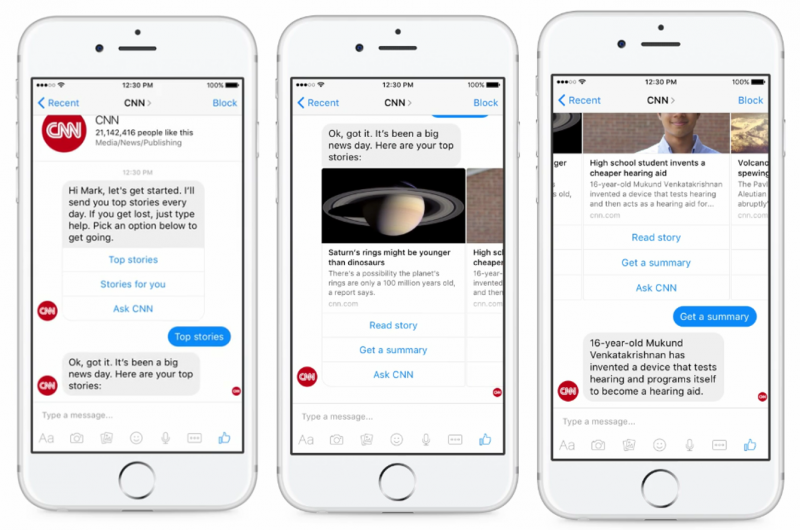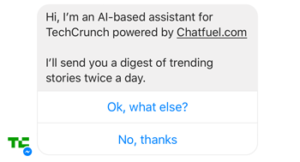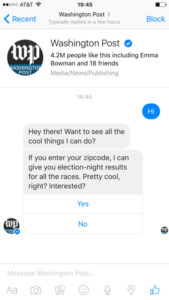
For the news industry, the old saying “the medium is the message” has transformed in “messaging is the new medium”. With an overwhelmed audience by the multitude of apps and notifications, newsrooms around the world are realizing that the new places to reach the readers are the messaging apps. The more forward-thinking newsrooms understand that there are more than 3,5 billion people worldwide using chat platforms such as WhatsApp, Viber, Facebook Messenger and WeChat and they are not to be ignored. As a response to this, some of them are experimenting with chat bots as a way to provide a more personalized news experience and reach more readers.
A world full of opportunities
Since Facebook has announced the new updates to its Messenger platform back in April, worldwide businesses, including few news organizations, have built more than 11.000 bots. However, Facebook Messenger is not the only chat platform out there with bot-building capabilities – other popular options among news organizations include Kik, Telegram and Slack. All together, these platforms sum up more than 1,5 billion monthly users, mostly teenagers and young people which newspapers struggle to reach and convert to subscribers.
While there might be pro and cons for each platform, it is interesting to look at some of the automated channels that have already been released and how different newsrooms have decided to approach this opportunity.
CNN
CNN’s Facebook Messenger bot one of the first to be ready and showcased at Facebook’s F8 developer conference in April. CNN’s Messenger bot sends one push alert per day, a two-part notification that gives users the latest headlines, followed by short summaries of articles and links to each story.
Not long after that, in July, CNN has also launched a bot on Kik, which covered 2016 US Elections news.
“We curate, you query, that’s the idea. We look at the CNN stories from around the globe and publish those according to the time of day and the type of audience we’re trying to reach,” said Alex Wellen, chief product officer at CNN. “Chat bots need to feel more like a chat and less like a bot and get to a place where we understand you, where you are and what you’re doing, without you having to share that information and return a response that makes more sense.”
TechCrunch
TechCrunch’s bot, developed in partnership with Chatfuel for both Messenger and Telegram, sends a digest of trending stories once a day. Users can ask for stories by entering keywords manually, such as ‘elections’, and they can also subscribe to receive updates about a particular topic, or from a particular author or section of the site.
“It’s a constant learning process. This type of storytelling isn’t new in and of itself, but we’re finding new ways of doing it”

BBC World Service
BBC has taken advantage of this new approach to enter forbidden markets or difficult to reach audiences. For instance, they have launched a bot on Telegram for Uzbekistan, as bbcuzbek.com is blocked in the country. The BBC Telegram bot sends users a daily digest of articles, allows them to manage what kind of news they receive, and sends them the latest stories.
BBC World Service is also building a BBC Mundo Facebook Messenger bot for Spanish-speaking audiences who might not visit the site and prefer to get their news on this platform instead.
The Washington Post

The Washington Post went live with its Messenger bot in July. Joey Marburger, the outlet’s head of product said “the team did not jump on the bot bandwagon straight away because they wanted to wait and study how people reacted to other publishers’ bots.” Consequently, The Washington Post bot does not send any alerts to users currently, unless they specifically request it.
Probably from the assumption that “the audience there is very young and might not understand as much of what is going on in the news and what it means,” (Masuma Ahuja, CNN’s social apps producer) has started the whole idea of having news chat bots. Still, similar to push notifications, bots will only be further developed and keep rising even more questions: Notifications or not? How many alerts per day? How many topics to cover? Which topics? Which platform is the best? How many platforms, and so on.
